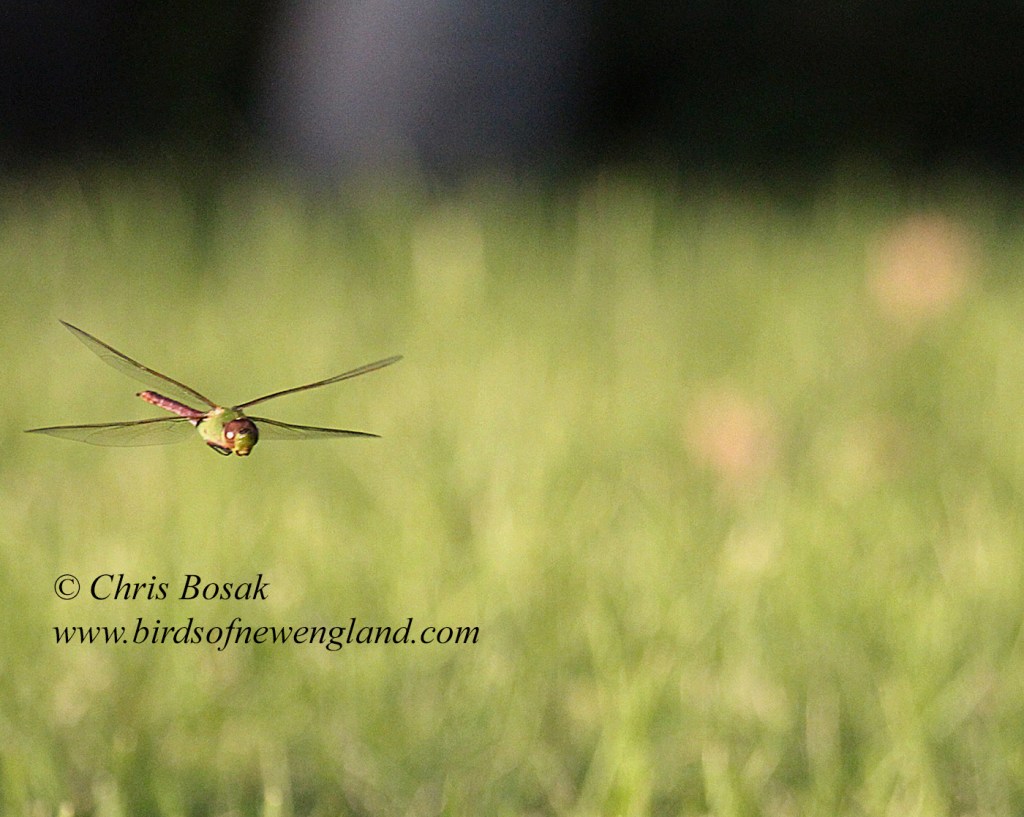
The sun was starting to set behind the marsh, casting a golden glow on the backyard.
In this magical light, we could see dragonflies by the dozens, perhaps hundreds, zipping around the yard. Looking closer, aided by the light, we could see hundreds, if not thousands, of mosquitoes, presenting themselves as tiny specks in the air. Looking even closer, we could see the dragonflies chase down and eat the mosquitoes. The mosquitoes didn’t stand a chance against these perfectly engineered predators.
I went out to try my luck at photographing a dragonfly in midair. It’s been an elusive shot in my catalog of nature photos. Even with the sheer numbers of dragonflies and the perfect evening sun at my back, the shot proved to be a challenge. I somewhat met the challenge, however. I wouldn’t say I nailed the shot as it’s not ideally composed, focused, exposed or any other type of technical photography term you can think of. But, for my purposes, it’s not bad. I’m not shooting for National Geographic or anything.
Dragonflies are small, fast and can move in any direction. It’s not easy to get a good shot of a dragonfly when it’s perched, let alone zipping around in unpredictable patterns.
I tried to follow an individual dragonfly through the camera lens. That was a lesson in futility. Even if I could follow one (which I couldn’t) it would have been impossible for the autofocus mechanism to keep up. Manual focusing by panning the subject wouldn’t have worked either. Not even close.
So I tried a trick I used sometimes when I was a sports photographer. I focused on a spot and waited for something to enter the frame. Actually, in this case, there were so many dragonflies that they were constantly in the frame so I just held down the shutter. Just because they were in the frame doesn’t mean the shots came out OK. On the contrary, 99 percent of the photos were instantly deleted because they were out of focus, usually by a long shot.
But I kept trying and made adjustments to the camera as I went along and the sun continued to set. I have no idea how many photos I took, but it didn’t really matter. Digital cameras can hold lots of photos these days.
This would have been impossible to do with the “old” film camera. Imagine blowing through several rolls of expensive oil and paying the cost of having them developed only to see a bunch of blurry dots. That was our reality not too long ago.
Clearly, the dragonflies didn’t eat all of the mosquitoes as I donated a few pints of blood trying to get the shots. What is it about my ankles that mosquitoes like so much?
As I mentioned earlier, dragonflies are a perfect predator for their prey and a single dragonfly can catch and eat dozens or even hundreds of mosquitoes in a single day. Their four wings allow them to fly in any direction, or even hover, and their vision is outstanding. They catch prey with their legs and eat the catch immediately.
Despite their awesome flying ability, they can sometimes become the prey as well. I remember watching a green heron at a small pond years ago snapping dragonflies out of the air.
I see dragonflies on nearly every walk I take in the spring, summer and fall. But I don’t remember ever seeing such a scene with so many of them concentrated in one yard. Neither of the neighbors had this spectacle going on. It was ours to watch exclusively. It was one of those moments in nature you stumble upon from time to time.
